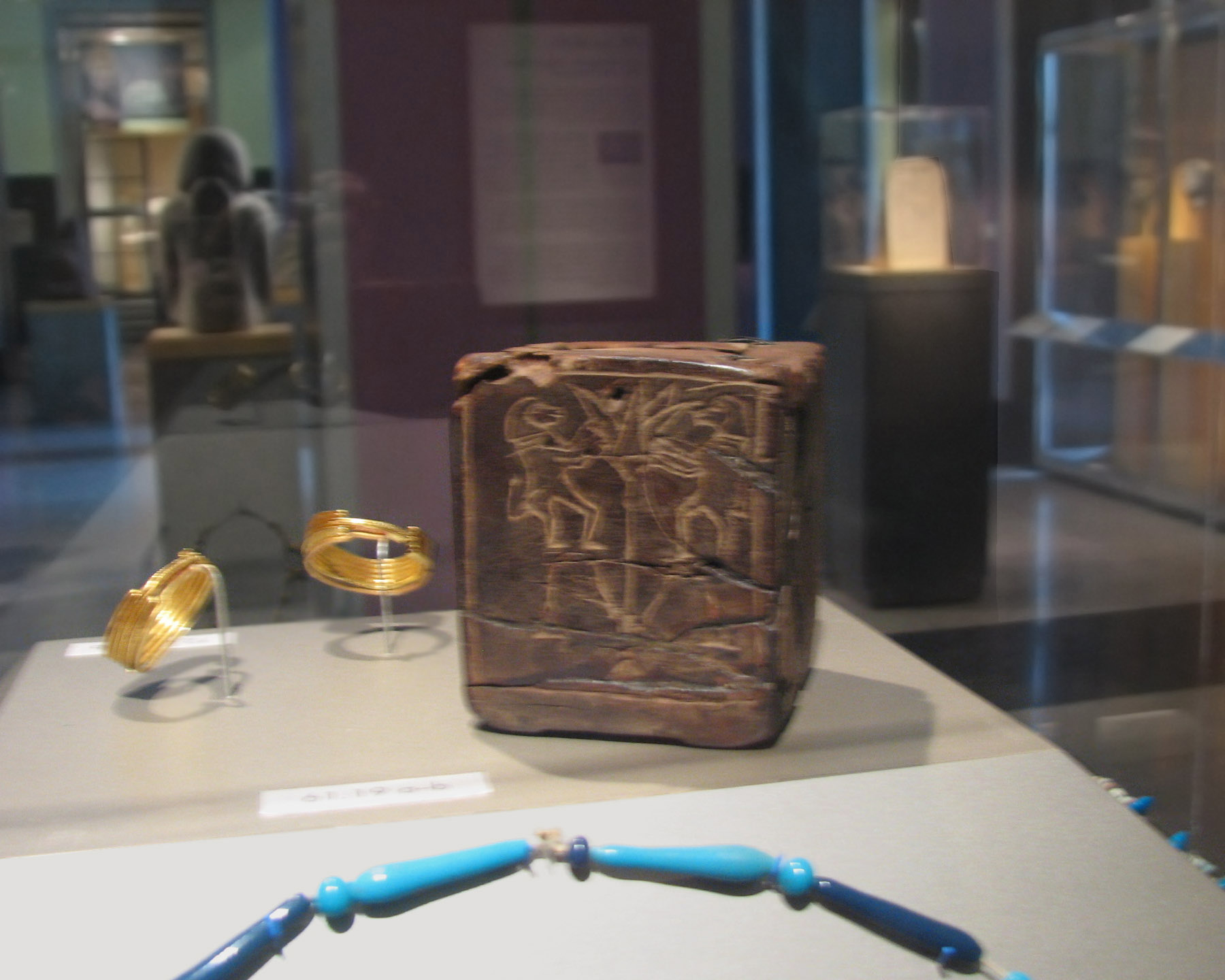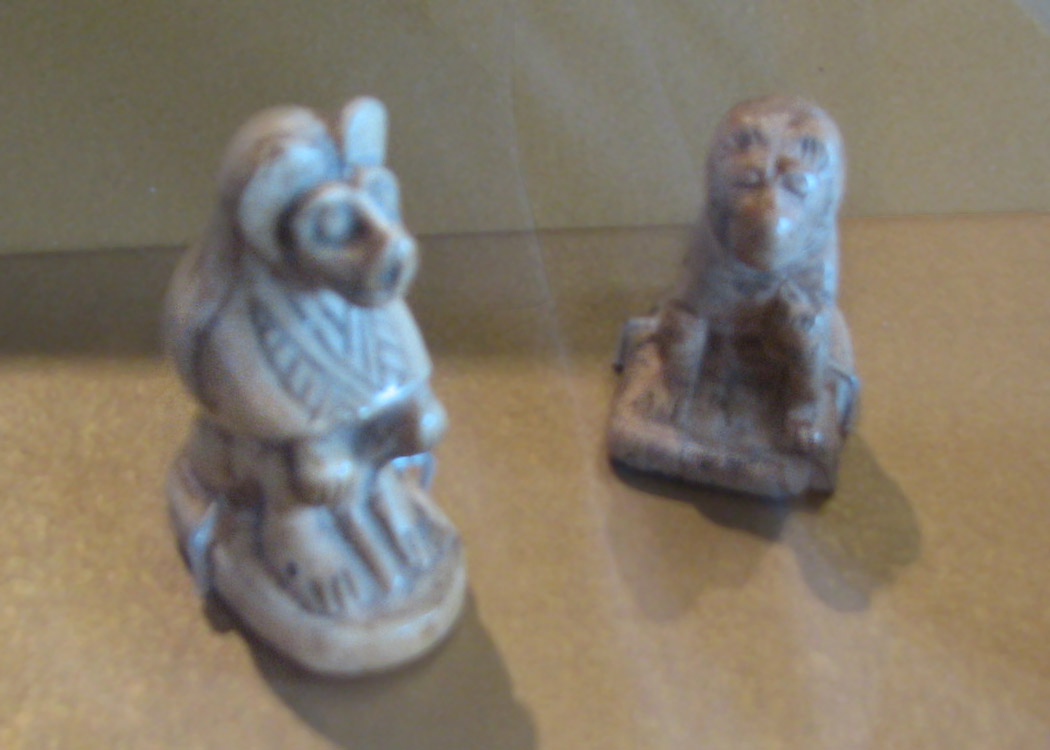
Jewelry Box (?) with Lid
Wood, 3 5/8 x 3 3/16 x 3 1/4 in. (9.2 x 8.1 x 8.3 cm)
New Kingdom, XVIII Dynasty, 1539-1425 B.C.E.
Brooklyn #61.19, Charles Edwin Wilbour Fund
"Incised on front face naturalistic bunch of lotus flowers and on each side a lotus plant with two monkeys forming a playful caricature of the formal motif of the joining of the two lands." (From Catalogue description)
Earrings, Pair of Corrugated Hoops
Gold, New Kingdom, XVIII Dynasty, ca. 1539-1292 B.C.E.
72.123a: 1 5/8 x 1/2 x 1 7/16 in. (4.1 x 1.3 x 3.7 cm)
72.123b: 1 5/8 x 9/16 x 1 5/8 in. (4.1 x 1.4 x 4.1 cm)
Charles Edwin Wilbour Fund
Photo © Joan Lansberry, May 2008



